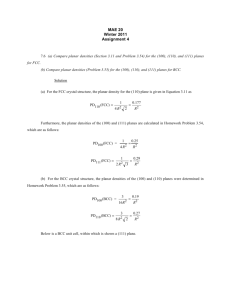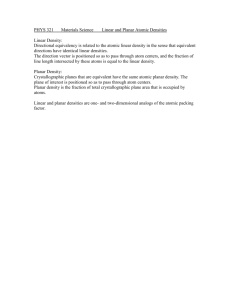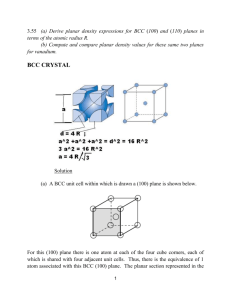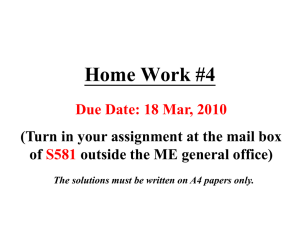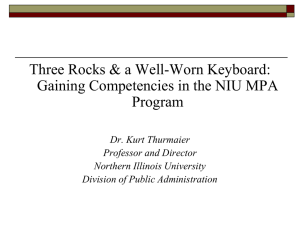SOLUTION_ASSIGNMENT_CHAPTER_7
advertisement
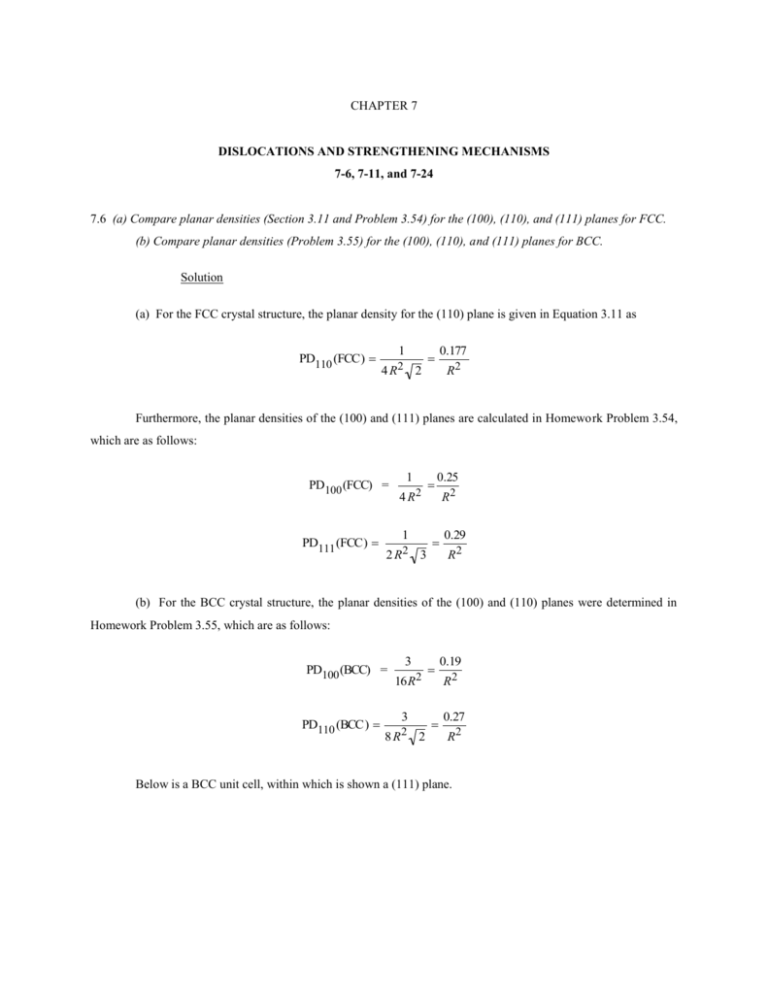
CHAPTER 7 DISLOCATIONS AND STRENGTHENING MECHANISMS 7-6, 7-11, and 7-24 7.6 (a) Compare planar densities (Section 3.11 and Problem 3.54) for the (100), (110), and (111) planes for FCC. (b) Compare planar densities (Problem 3.55) for the (100), (110), and (111) planes for BCC. Solution (a) For the FCC crystal structure, the planar density for the (110) plane is given in Equation 3.11 as PD110 (FCC) 1 0.177 4 R2 R2 2 Furthermore, the planar densities of the (100) and (111) planes are calculated in Homework Problem 3.54, which are as follows: PD100 (FCC) = PD111 (FCC) 1 4 R2 1 2 R2 0.25 3 R2 0.29 R2 (b) For the BCC crystal structure, the planar densities of the (100) and (110) planes were determined in Homework Problem 3.55, which are as follows: PD100 (BCC) = PD110 (BCC) 3 16R2 3 8 R2 2 0.19 0.27 R2 R2 Below is a BCC unit cell, within which is shown a (111) plane. (a) The centers of the three corner atoms, denoted by A, B, and C lie on this plane. Furthermore, the (111) plane does not pass through the center of atom D, which is located at the unit cell center. The atomic packing of this plane is presented in the following figure; the corresponding atom positions from the Figure (a) are also noted. (b) Inasmuch as this plane does not pass through the center of atom D, it is not included in the atom count. One sixth of each of the three atoms labeled A, B, and C is associated with this plane, which gives an equivalence of one-half atom. In Figure (b) the triangle with A, B, and C at its corners is an equilateral triangle. And, from Figure (b), the xy area of this triangle is . The triangle edge length, x, is equal to the length of a face diagonal, as indicated in 2 Figure (a). And its length is related to the unit cell edge length, a, as x 2 a 2 a 2 2a 2 or xa 2 For BCC, a 4R (Equation 3.3), and, therefore, 3 x 4R 2 3 Also, from Figure (b), with respect to the length y we may write x 2 y 2 x 2 2 which leads to y x 3 . And, substitution for the above expression for x yields 2 y x 3 4 R 2 3 4 R 2 3 2 2 2 Thus, the area of this triangle is equal to AREA 1 4 R 2 4 R 2 8 R2 1 x y 3 2 2 3 2 And, finally, the planar density for this (111) plane is PD111 (BCC) 0.5 atom 8 R2 3 16 R 2 0.11 R2 3 7.11 Sometimes cos cos in Equation 7.2 is termed the Schmid factor. Determine the magnitude of the Schmid factor for an FCC single crystal oriented with its [100] direction parallel to the loading axis. Solution We are asked to compute the Schmid factor for an FCC crystal oriented with its [100] direction parallel to the loading axis. With this scheme, slip may occur on the (111) plane and in the [1 1 0] direction as noted in the figure below. The angle between the [100] and [1 1 0] directions, , may be determined using Equation 7.6 cos1 u12 v12 w12 u 22 v 22 w 22 u1u 2 v1v 2 w1w2 where (for [100]) u = 1, v = 0, w = 0, and (for [1 1 0] ) u = 1, v = -1, w = 0. Therefore, is equal to 1 1 1 2 2 2 cos1 2 2 2 2 2 2 (1) (0) (0) (1) (1) (0) (1)(1) (0)(1) (0)(0) 1 cos1 2 45 Now, the angle is equal to the angle between the normal to the (111) plane (which is the [111] direction), and the [100] direction. Again from Equation 7.6, and for u = 1, v = 1, w = 1, and u = 1, v = 0, and w = 0, we have 1 cos1 1 1 2 2 2 2 (1) (0) (0) (1)(1) (1)( 0) (1)(0) (1) 2 (1) 2 (1) 2 1 cos1 3 54.7 2 2 Therefore, the Schmid factor is equal to 1 1 cos cos = cos (45) cos (54.7 ) = 2 = 0.408 3 7.24 The lower yield point for an iron that has an average grain diameter of 5 10-2 mm is 135 MPa (19,500 psi). At a grain diameter of 8 10-3 mm, the yield point increases to 260 MPa (37,500 psi). At what grain diameter will the lower yield point be 205 MPa (30,000 psi)? Solution The best way to solve this problem is to first establish two simultaneous expressions of Equation 7.7, solve for 0 and ky, and finally determine the value of d when y = 205 MPa. The data pertaining to this problem may be tabulated as follows: y d (mm) d-1/2 (mm)-1/2 135 MPa 5 10-2 4.47 260 MPa 8 10-3 11.18 The two equations thus become 135 MPa = 0 + (4.47) k y 260 MPa = 0 + (11.18) k y Which yield the values, 0 = 51.7 MPa and ky = 18.63 MPa(mm)1/2. At a yield strength of 205 MPa 205 MPa = 51.7 MPa + 18.63 MPa (mm) 1/2 d -1/2 or d-1/2 = 8.23 (mm) -1/2, which gives d = 1.48 10-2 mm.

